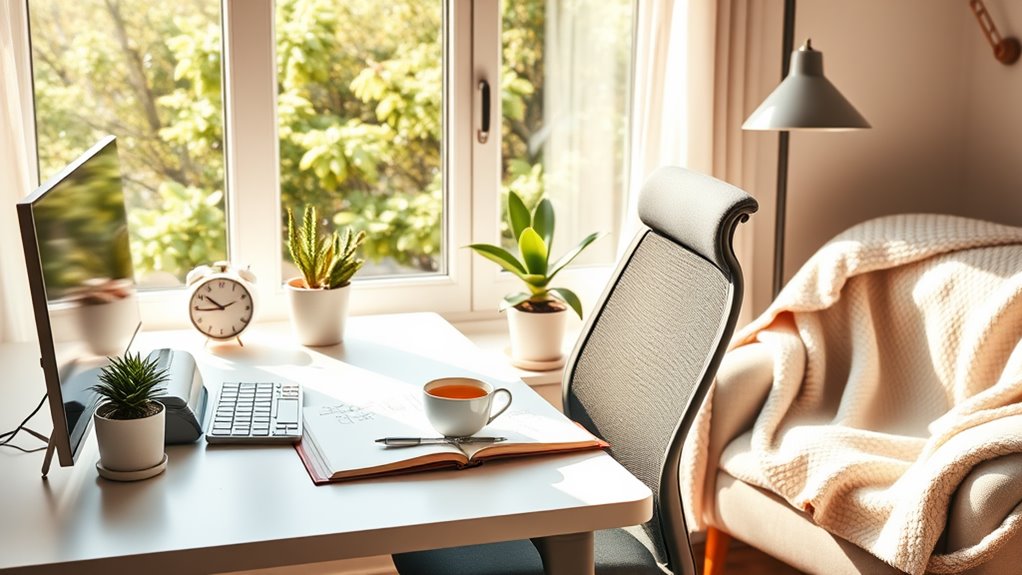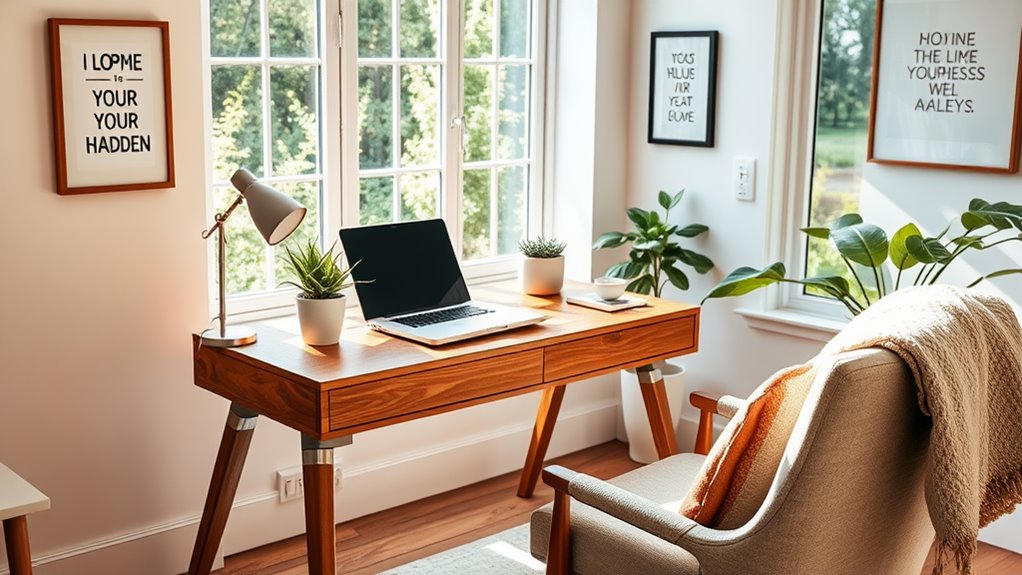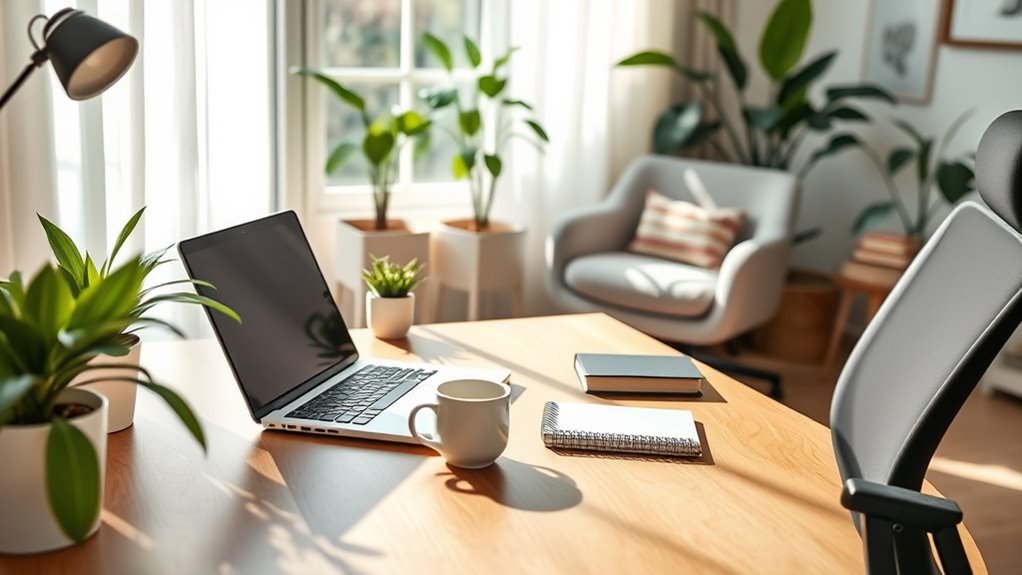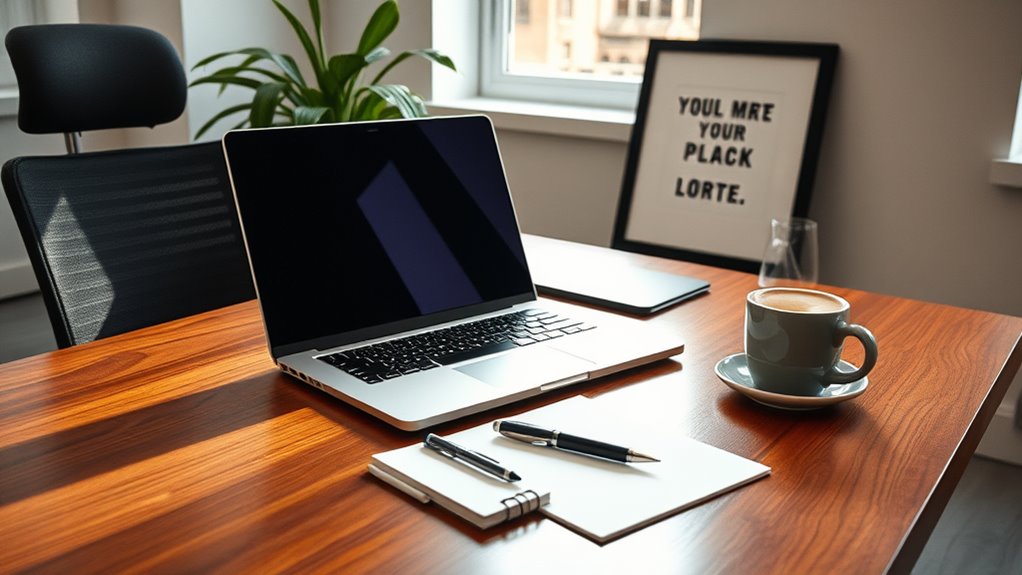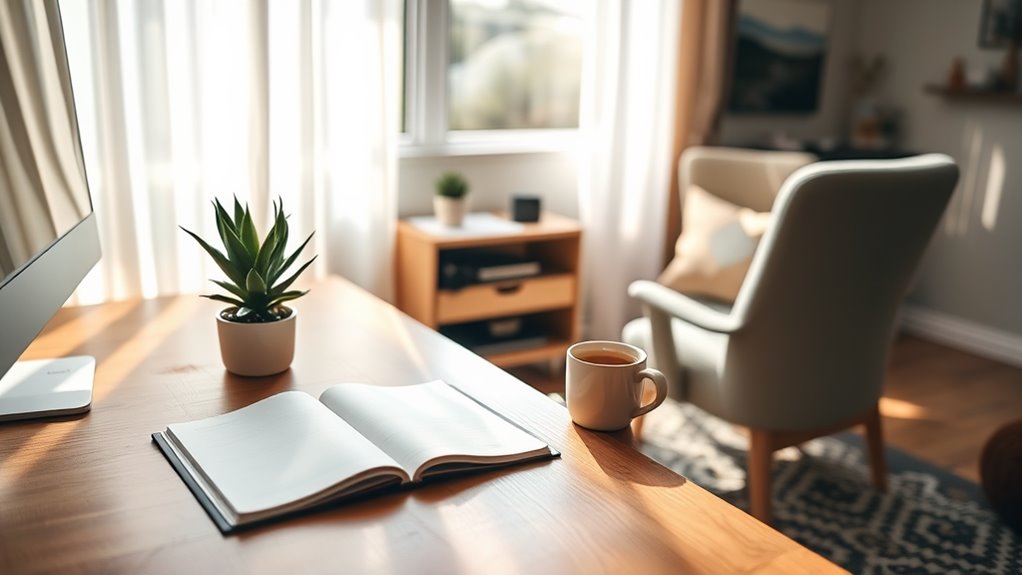Work-from-Home Tips That’ll Stop You From Overworking
To stop overworking at home, you need to set clear boundaries. Establish defined work hours to signal when you’re on and off the clock. Create a dedicated workspace that’s free from distractions, helping your brain switch into work mode. Don’t forget to take regular breaks; use techniques like the Pomodoro method to refresh your focus. Limit digital distractions by muting notifications outside of your hours. Finally, communicate your boundaries with your team to guarantee they respect your time. Keep these tips in mind, and you’ll find a balanced approach that works for you—more insights are just around the corner!
Key Takeaways
- Establish clear work hours to define availability and create boundaries for a healthier work-life balance.
- Designate a specific workspace to mentally separate professional tasks from personal activities.
- Take regular breaks, using techniques like the Pomodoro Technique, to maintain focus and prevent burnout.
- Limit digital distractions by muting notifications and using apps to block social media during work hours.
- Communicate boundaries effectively with colleagues and family to minimize interruptions and reinforce work-life separation.
Establish Clear Work Hours
When you set clear work hours, you create boundaries that help maintain a healthy work-life balance.
It’s easy to let work seep into your personal time, especially when you’re working from home. By defining your start and end times, you signal to yourself and others when you’re available.
Stick to these hours as much as possible, and communicate them to colleagues and family. This way, you’ll minimize interruptions and encourage respect for your time.
Don’t forget to schedule breaks, too; they’re essential for staying focused and energized.
If you find yourself tempted to work late or during weekends, remind yourself of the benefits of having set hours.
Ultimately, you’ll feel more productive and less stressed.
Designate a Workspace
Setting clear work hours is just the first step in creating an effective home office environment. You need to designate a specific workspace that’s separate from your personal areas.
This doesn’t mean you need a dedicated room; even a corner of your living room can work. Make certain it’s comfortable and equipped with everything you need, like a good chair, desk, and proper lighting.
Make it personal by adding items that inspire you, but keep it clutter-free to maintain focus. By having a designated space, you’ll mentally associate that area with work, helping you switch into productivity mode.
Stick to this space during your work hours, and you’ll find it easier to draw a line between professional and personal time.
Take Regular Breaks
How often do you take breaks during your workday? If you can’t remember, it’s time to change that.
Regular breaks aren’t just a luxury; they’re vital for maintaining your focus and productivity. Stepping away from your desk, even for a few minutes, can refresh your mind and prevent burnout.
Try the Pomodoro Technique—work for 25 minutes, then take a 5-minute break. Use this time to stretch, grab a drink, or breathe deeply.
You’ll find that these short respites help you return to your tasks with renewed energy and clarity.
Don’t underestimate the power of a break; it’s a significant step in keeping your work-life balance in check while working from home.
Limit Digital Distractions
After taking those much-needed breaks, it’s time to tackle another challenge: digital distractions.
In a world filled with notifications and endless tabs, staying focused can feel impossible. To help you regain control, try these four strategies:
-
Mute Notifications: Silence non-essential alerts to keep your attention where it belongs.
-
Designate Work Hours: Set specific times for work and stick to them, minimizing after-hours distractions.
-
Limit Social Media: Consider using apps that block social media during your work hours.
-
Create a Dedicated Workspace****: Establish a specific area for work to mentally separate it from leisure activities.
Practice Mindfulness Techniques
While you navigate the challenges of working from home, incorporating mindfulness techniques can enhance your focus and reduce stress. Start by setting aside a few minutes each day for deep breathing exercises. Focus on your breath—inhale for four counts, hold for four, and exhale for six. This simple practice can ground you and clear your mind.
You might also try short meditations or guided imagery to help center your thoughts. When distractions arise, take a moment to pause and reconnect with your breath.
Additionally, consider incorporating mindful breaks during your workday. Step away from your desk, stretch, or take a quick walk. These practices not only refresh your mind but also foster a healthier work-life balance, helping you avoid overworking.
Communicate Boundaries Effectively
Establishing clear boundaries is essential for maintaining a healthy work-life balance when you’re working from home.
You need to communicate these boundaries effectively to avoid burnout and guarantee productivity. Here are some tips:
-
Set specific work hours****: Let your team know when you’re available and when you’re off the clock.
-
Use technology wisely: Silence notifications outside work hours to minimize distractions.
-
Create a dedicated workspace: Designate an area in your home solely for work to mentally separate tasks.
-
Be assertive: If someone interrupts your downtime, kindly remind them of your established boundaries.
Frequently Asked Questions
How Can I Identify When I’m Overworking?
You can identify when you’re overworking by noticing signs like fatigue, irritability, or lack of focus. If you’re skipping breaks or extending work hours frequently, it’s time to reassess your workload and priorities.
What Tools Can Help Manage My Time Effectively?
To manage your time effectively, try using digital calendars, task management apps, and timers. These tools help you prioritize tasks, set deadlines, and remind you when it’s time to take breaks or switch activities.
How Should I Handle Work-Related Notifications After Hours?
To handle work-related notifications after hours, set clear boundaries. Mute notifications, establish a consistent off-work routine, and communicate your availability to colleagues. Prioritize personal time to recharge and maintain a healthy work-life balance.
Can I Mix Personal Tasks With Work Tasks During the Day?
You can mix personal tasks with work tasks during the day, but it’s important to find a balance. Just make sure you’re managing your time well and staying focused on your priorities to avoid distractions.
What Are the Signs of Burnout When Working From Home?
When you’re working from home, signs of burnout include constant fatigue, lack of motivation, irritability, and difficulty concentrating. If you notice these symptoms, it’s essential to take a break and reassess your work-life balance.

